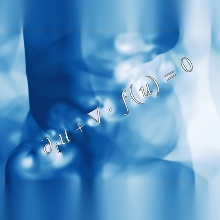Directly to
Team
Principal Investigators:
- Emil Wiedemann,
Friedrich-Alexander-Universität Erlangen-Nürnberg, Departement of Mathematics - Gianluca Crippa,
University of Basel, Department of Mathematics and Computer Science
Project staff:
- Stefan Skondric (Erlangen)
- Alessandro Violini (Basel)
Abstract
This project addresses several physically motivated questions on the analysis of equations of fluid dynamics. The project has a foundational character and aims at providing a rigorous analytical understanding which will expand our knowledge in the following two directions:
- From homogeneous incompressible fluids to inhomogeneous and compressible fluids.
- From classical notions of weak solutions to generalized notions of weak solutions.
In the last ten years, major progress has been achieved on several long-standing questions rooted in the Kolmogorov-Onsager theory of turbulence, most notably the proof via convex integration of the existence of nonconservative solutions of the Euler equations with regularity below 1/3, in which energy is dissipated through creation of small spatial scales. The transport structure of the vorticity equation in two spatial dimensions and the presence of an inverse cascade have been exploited to prove energy conservation and further properties in some Onsager-supercritical regimes. Refined numerical simulations and the manifested insufficiency of the entropy conditions to select a unique solution in many hyperbolic problems led the way to generalized notions of weak solutions, including statistical and measure-valued solutions, with an extended effort in their analysis and computation.
In spite of all this exciting recent progress, most of the theory is presently limited to homogeneous incompressible fluids and to classical weak solutions. In this project, we aim to go significantly beyond the state of the art, addressing in particular the following topics:
- Energy conservation and further properties of Onsager-supercritical statistical solutions for homogeneous incompressible fluids originating from vanishing viscosity or from numerical approximation schemes.
- Statistical solutions for inhomogeneous and compressible fluids: foundations.
- Energy conservation and further properties of Onsager-supercritical weak solutions for inhomogeneous incompressible fluids.
- Conservation anomalies in statistical solutions and for inhomogeneous incompressible fluids.
- The same topics as in (C)-(D) for inhomogeneous compressible fluids.


